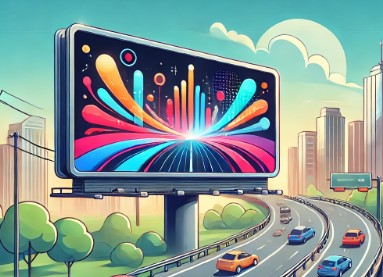How it works
When we were approached by OOH (out-of-home, i.e., billboard advertising) company AdQuick to sponsor our Research Tidbits, it made me think of my many drives between Palm Springs and LA, and how I’ve always thought billboard advertising could be so much better. It turns out, digital out-of-home (DOOH) advertising (provided by companies like our sponsor) has revolutionized the field and provides marketers with tools to advertise far more effectively than they used to. Here’s what marketers need to know about how DOOH works:
- Programmatic Buying: DOOH can be bought programmatically, like how online ads are purchased. Advertisers use data-driven platforms to purchase ad space in real-time, optimizing for the best placements and times.
- Real-Time Updates: Advertisers can update content instantly based on various factors such as time of day, weather, location, and audience demographics. This ensures that the ads are always relevant.
- Audience Targeting: Using data from mobile devices, social media, and other sources, advertisers can target specific demographics. This ensures the ads reach the intended audience more effectively.
- Performance Metrics: Advanced analytics allow advertisers to measure the impact of their DOOH campaigns. Metrics such as foot traffic, dwell time, and engagement rates provide insights into ad performance.
- QR Codes: DOOH ads often incorporate QR codes or NFC technology, allowing viewers to interact with the ad using their smartphones. This can direct them to websites, special offers, or additional content.
- Augmented Reality (AR): Some DOOH campaigns use AR to create immersive experiences. For example, viewers can point their phones at an ad to see additional layers of content.
Some very memorable DOOH campaigns have been created by advertisers with large budgets, such as this campaign where Nike placed shoes on the feet of graffiti characters on the walls of Sao Paolo. But companies with smaller advertising budgets can also benefit from utilizing the above DOOH guidelines. Here are some examples of billboards where advertisers utilized data, context and creativity with great results.
Let’s discuss creative ways to get your customers’ attention! Email me at info at bureauwest.com
Sources: “Unlocking the creative potential of out-of-home advertising,” Ipsos, 20/2/24; “Five 2024 OOH Trends Shaping Up 2024,” Advertising Week; “OOH in 2024: 6 key trends defining the future of out of home advertising,” Marketing Beat, 12/7/23; “Air Max Graffiti Stores,” AKQA.com; “OOH Creative Best Practices Guide,” AdQuick.com

